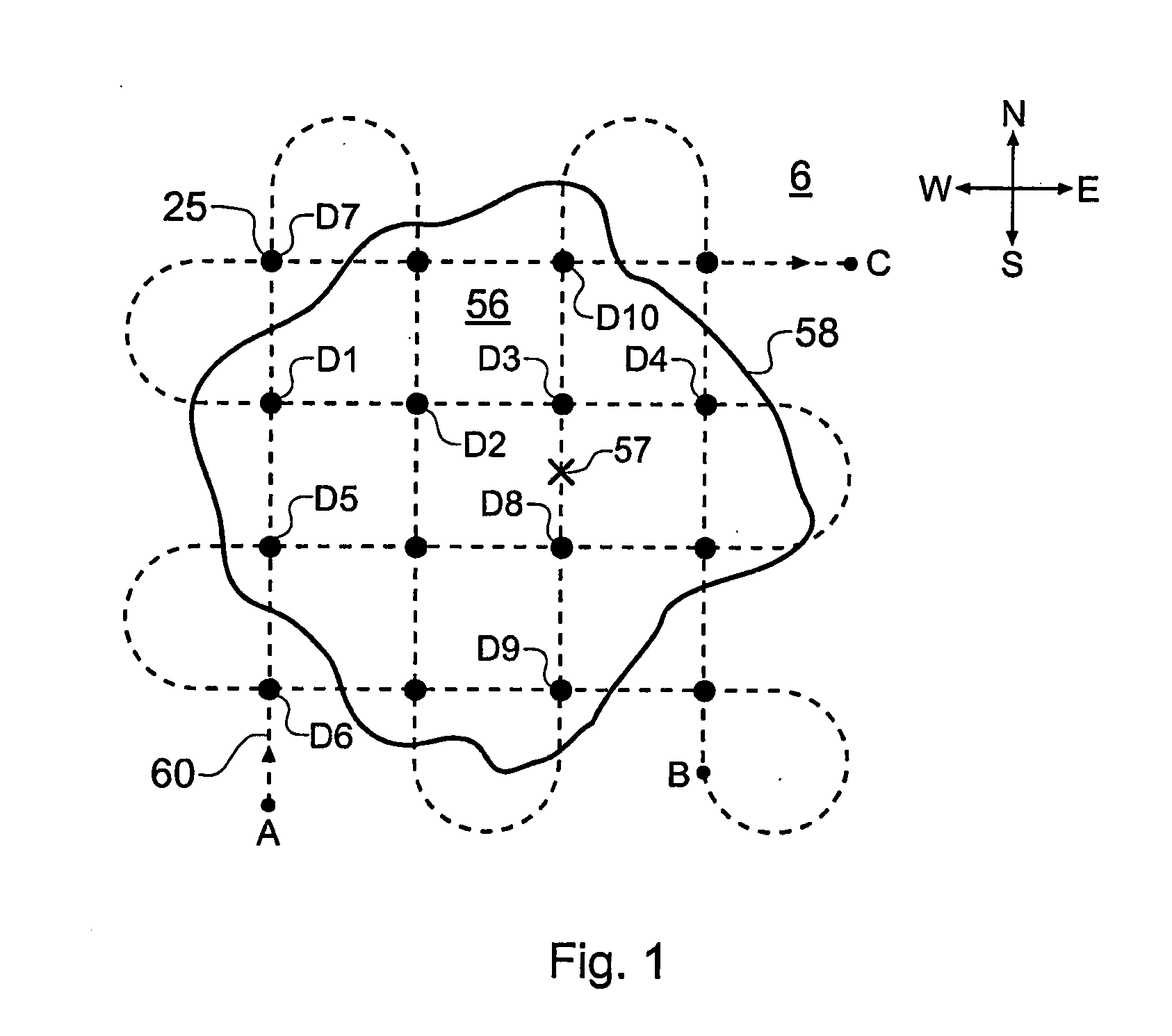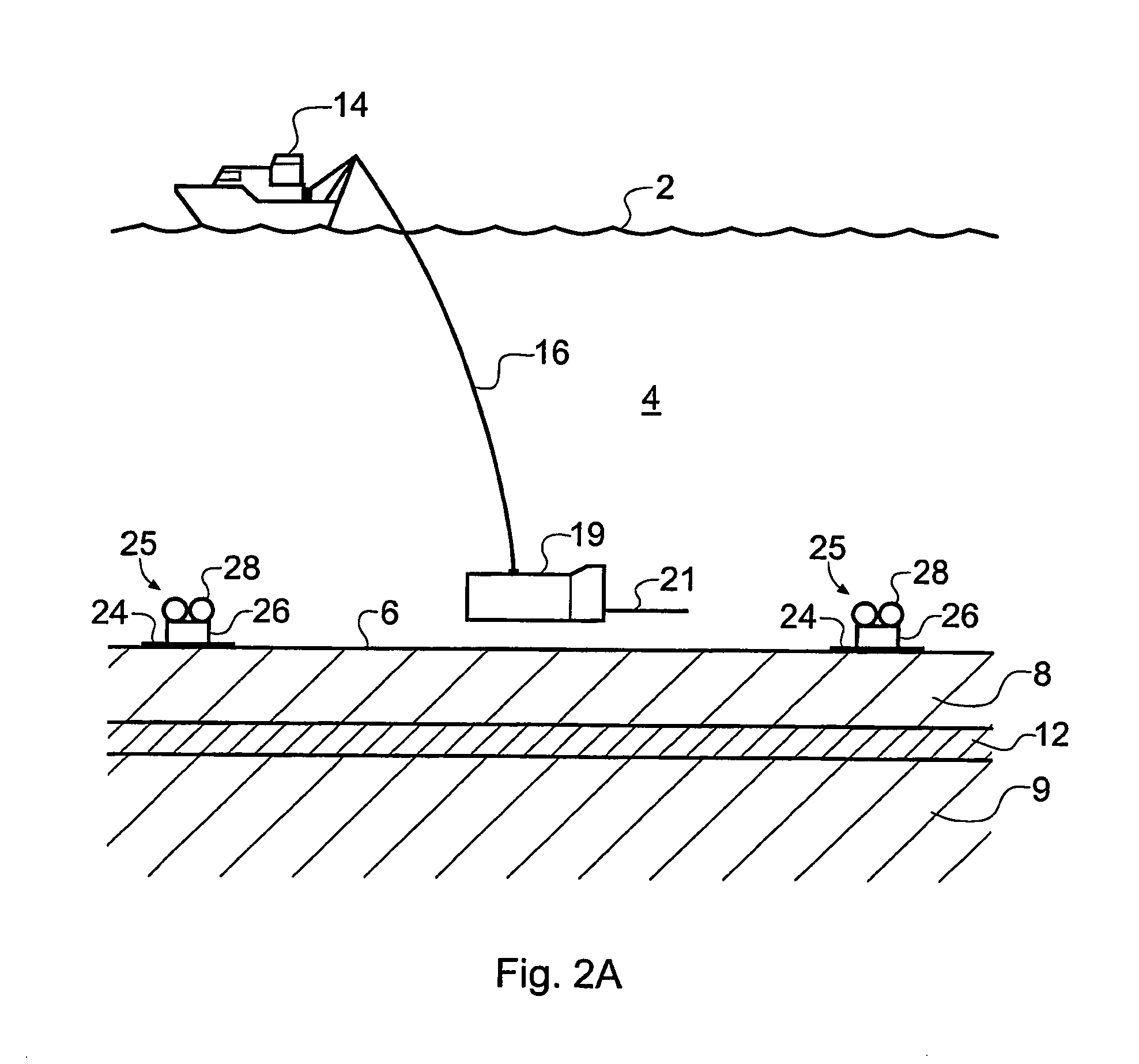Electromagnetic surveying for hydrocarbon reservoirs
a hydrocarbon reservoir and electromagnetic technology, applied in the field of electromagnetic field, can solve the problems of inability to rely on these components alone for detecting hydrocarbon layers, inability to provide reliable statoil methods, and inability to widely think of electromagnetic surveying, etc., to achieve simple inversion modelling and improve the vertical resolution of structures
- Summary
- Abstract
- Description
- Claims
- Application Information
AI Technical Summary
Benefits of technology
Problems solved by technology
Method used
Image
Examples
Embodiment Construction
[0055] A method of electromagnetic surveying for oil and other hydrocarbon reserves is described which does not require separate data acquisition of the response of a subterranean strata configuration to inductively and galvanically coupled modes. The new method can be performed using pre-existing survey equipment.
[0056]FIG. 2A schematically shows a surface vessel 14 undertaking EM surveying of a subterranean strata configuration in a way that is suitable for collecting survey data for carrying out the invention. The subterranean strata configuration includes an overburden layer 8, an underburden layer 9 and a hydrocarbon layer (or reservoir) 12. The surface vessel 14 floats on the surface 2 of the seawater 4. A deep-towed submersible vehicle 19 carrying a HED antenna 21 is attached to the surface vessel 14 by an umbilical cable 16 providing an electrical, optical and mechanical connection between the deep-towed submersible vehicle 19 and the surface vessel 14. The HED antenna broa...
PUM
 Login to View More
Login to View More Abstract
Description
Claims
Application Information
 Login to View More
Login to View More - R&D
- Intellectual Property
- Life Sciences
- Materials
- Tech Scout
- Unparalleled Data Quality
- Higher Quality Content
- 60% Fewer Hallucinations
Browse by: Latest US Patents, China's latest patents, Technical Efficacy Thesaurus, Application Domain, Technology Topic, Popular Technical Reports.
© 2025 PatSnap. All rights reserved.Legal|Privacy policy|Modern Slavery Act Transparency Statement|Sitemap|About US| Contact US: help@patsnap.com



